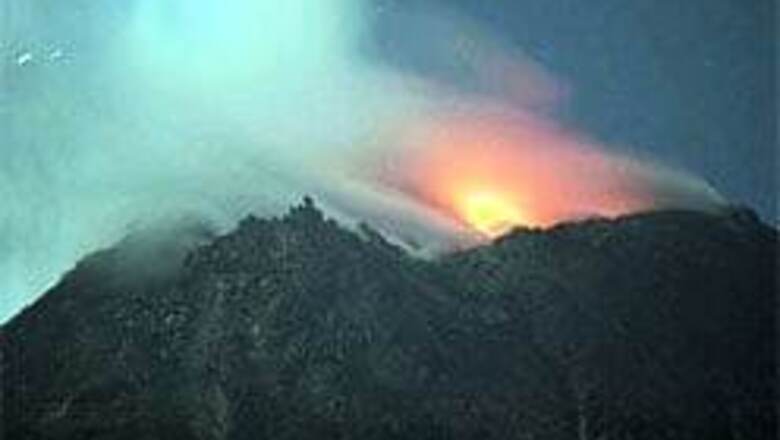
views
Indonesia: Indonesia's most volatile volcano nearly enveloped a village with a searing gas cloud during an eruption on Wednesday and forced thousands of residents to evacuate just a day after officials lowered the alert level and people returned home.
''The situation is life-threatening,'' said Yousana Siagian, head of the government's Vulcanology and Disaster Mitigation Center, after the alert level for Mount Merapi was raised to its highest status again and the peak dumped thick ash on scores of houses.
State news agency Antara reported five villagers were unaccounted for after the eruption, but gave no more details.
Other media reports said that several apparently uninhabited buildings close to the peak had been incinerated.
Scientists had thought that the 3,000-meter volcano was calming down after weeks of activity when a gas cloud cracked its fragile lava dome last Thursday, easing the buildup of pressure.
The alert level was dropped a notch on Tuesday, sparking widespread relief for people who have spent weeks in evacuation camps and were trucked home.
That relief quickly turned to concern Wednesday as Merapi demonstrated its famed unpredictability.
''We were very happy to go back in the morning but as soon as we got there we saw a massive cloud steaming toward us,'' villager Edi Egan said after being trucked back to the camp. ''We all decided it was time to leave.''
Up to 20,000 people live in the danger zone, taking advantage of the rich volcanic soil. By nightfall, at least 1,100 were back in camps and some 12,000 others were given orders to leave.
A superheated gas cloud nearly enveloped Kaliadem village, the closest residential area to the peak, just six kilometers (four miles) away, said Siagian, the government vulcanologist.
PAGE_BREAK
A similar cloud killed 60 people in 1994, and about 1,300 people died when Merapi erupted in 1930.
Siagian said Merapi spewed hot clouds as far as six kilometers (four miles) from the volcano's crater - the farthest since the alert status was first raised to the highest level on May 13.
Ash covered one village seven kilometers west of the crater with a gray blanket two centimeters thick, and a rain of soot continued to fall after dusk across many districts, officials said.
As villagers started returning home on Tuesday, they were told to stay alert, and evacuation trucks remained on standby. They quickly sprung into action.
''The villagers are confused. They said it was safe, but hot clouds re-emerged.
One thing is for sure - we have readied ourselves to evacuate anytime,'' said Budiono, the chief of Ngargosoko, a village some 10 kilometers (6 miles) from the peak that was ordered evacuated.
Some 12,000 residents of seven villages on the mountain's west side have been ordered to leave, said district official Edy Susanto. Some were still waiting for trucks to take them to shelters as dusk fell.
''A heavy rain of ash and sand poured down on villagers,'' said Sugiono, an official from a monitoring post. He said it was very dark in the village, which was covered with smoke and ash. ''People instinctively came to the shelters.''
Despite the danger, many people have stayed put over the last month, citing the need to guard their homes and look after crops and animals.
The main dangers at Merapi are fast-moving bursts of blistering gases and rock fragments called pyroclastic flow. Experts say a massive vertical eruption threatening people many miles away will not occur.



















Comments
0 comment